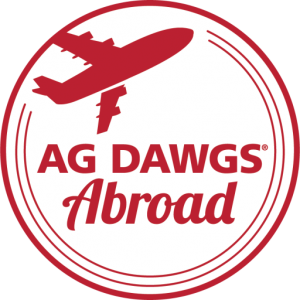France France France, what an experience it has been! We spend most of our days at ENSAT but don’t be mistaken, we have done our fair share of exploring and visiting nearby towns in our free time. As our study abroad in Toulouse is almost over, I am very grateful to for all of the individuals here in France who have made our experience all the better. I am also thankful for the great hospitality shown to us. While the majority of our classes have been of great interest, I would like to talk about a few that stand out as my favorite.
Perhaps my favorite class thus far has been the one in which we discussed the Common Agricultural Policy (CAP). CAP is a piece of European Union legislation that is their equivalent of the U.S. Farm Bill. While the Farm Bill encompasses 12 diverse Titles, CAP focuses on two main pillars: support production and support rural development. Starting out as a measure to become food sufficient, CAP has grown into a dynamic policy, supporting agricultural markets through subsidies, “greening” strategies, competitiveness, sustainability and many other objectives. The following timeline provides a broad overview of how CAP has developed since its beginning in 1960.
1960- Provide food sufficiently at an affordable price for consumers while providing a fair living for farmers.
1980’s- A food surplus due to the 1960 objectives, leading to a surplus crises and increased environmental issues.
2000- Reformed to focuse on producing less food of better quality and more efficiently
2013- Increasing global population (increased food demand), now focused on producing more quality food efficiently
Summarizing all of CAP in two paragraphs is quite difficult, especially because I do not know or understand all of it. I did, however, throughly enjoy our discussion of its development over the years.
Another class I found to be of great interest was our Poultry production lecture and farm visit. Since 2007, France employees three official “signs” (labels) that work to ensure quality products within the agricultural industry. The poultry industry, however, is primarily impacted by the support of Label Rouge (LR). Through a highly regulated system, producers, manufactures, feed companies, and processing plants must all meet very specific standards as they raise and process the birds . These requirements include, but are not limited to, only raise selected breeds of birds, access to free range for no less than half of the birds life, cereal based feeds with no growth promoters, an 85 day rearing and on farm inspections by certification officials. These regulations are in addition to farm specific rules set by each individual producer for his/her operation. At present, LR maintains 30 percent of the poultry market in France, averaging 5.66 euros/kg, compared to 3.38 euros/kg for non LR poultry. 75 percent of the French consumers prefer LR poultry simply because of the age at which the bird is harvested.
As you can see from the topics above, French agriculture is both similar and vastly different that American agriculture. While certain French programs may never take root in the U.S., I do feel that we can learn from many of their production systems. I have throughly enjoyed the trip thus far and am excited to conclude this French adventure!
